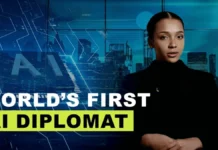Brazil is about to welcome a new submarine cable linking Latin America to Europe: ELLALINK. In addition to strengthening digital inclusion on the continent and reducing access costs, ELLALINK may offer an innovative model of governance that will protect Internet global infrastructures as common goods, thanks to the allocation of indefeasible access rights to non-commercial backbone providers. Before the activation of ELLALINK (probably in 2019), it is time for Brazilian and world civil society to take this unique opportunity to promote an alternative model of Internet governance and resist the growing pressure coming from the commercial sector in Brazil.
In 2014, then president Dilma Rousseff launched a vast programme to restore the digital sovereignty of Brazil in reaction to the Snowden revelations. This demonstrated how dependent Latin America is on worldwide Internet infrastructures, largely owned by American companies. Almost 99% of transcontinental data flows transit through submarine cables, whose consortia are in the hands of a few companies. These now include Google, Apple, Facebook, and Amazon (GAFA), who have been very active in a recent boom for these infrastructures. With the development of optical fibre and the commercialisation of the Internet, the USA had managed to play a central role in global telecommunication networks – replacing old colonial powers like Great Britain, who inherited a vast complex of telegraphic cables built during the nineteenth century to control the most distant colonies. Thus, the leading position of US companies was already visible in the 1990s in Brazil, even if this country was one of the first to embrace telecommunication revolutions, notably through the deployment of telegraphic networks.
The Rousseff programme was followed by a policy of digital sovereignty, a constant goal of Brazilian governments. In fact, the development of the Internet in Brazil is historically linked to a non-commercial initiative, the Rede Nacional de Pesquisa (RNP), created in 1989 to implement an academic network throughout the country. The network was already widespread when the first commercial operators arrived in the mid-1990s. After a brief attempt to enter the commercial market, the RNP has continued to stretch its activities across the whole territory (currently 1300 points of presence, including Amazonia). Next to the Brazilian Internet Steering Committee (CGI) created in 1995, the RNP is one of the pillars that support the Brazilian multistakeholder model of Internet governance, which aims at guaranteeing net neutrality by limiting the interference of commercial interests in traffic management. The objective of the RNP has evolved over the past 25 years. The cooperation of research centres and academic institutions from Latin America and Europe requires an outstanding network of interconnection, even more reliable and affordable since the recent launch of the Cerri Paranal observatory (Chile), where 70% of the world’s astronomical data will soon be produced. In the late 1990s, this increasing interdependence led the RNP and its European partners to initiate a common strategy to obtain better tariff agreements with commercial operators, but also to challenge the US monopoly on international bandwidth – a monopoly that explains why the cost of accessing the global network transiting through the USA is still ten to twenty times higher for Latin America than for Europe.
Consequently, during the Toledo Summit in 2002, several countries in Latin America and Europe launched an ambitious programme of scientific and technological cooperation aimed at strengthening connectivity between the two continents. Funded by the European Commission (ALICE 12), this programme conceived a common infrastructure project – the European Link to Latin America (ELLA) – that has since demonstrated the feasibility of a submarine cable linking Portugal to Brazil. ELLA’s objective is to guarantee the indefeasible right of scientific organisations and non-commercial actors to use the infrastructure, and its bandwidth capacity of 72 terabits/second.
Although this infrastructure project is not unique – three other transatlantic cables are planned to link Brazil to Africa – it is representative of the great challenges facing Internet governance. First, this submarine infrastructure might be a good opportunity to lower the prices of access to international bandwidth from Brazil, where they are still controlled by a few backbone providers who have maintained them artificially high for the past few decades – despite the privatisation of Embratel in 1998, despite the good results obtained by the National Broadband Plan developed by Telebras, and despite additional interconnection points (PTTMetro). This new infrastructure could contribute to lower Internet prices on the whole continent, thanks to an additional capacity of 72 terabits/second. Second, this submarine cable will open a new path for global traffic that will go from the European Union to Brazil, whose data protection policies are among the safest of the world. Last, this infrastructure will offer an innovative way of governance that could become a reference for the whole Internet: commercial telecom operators (Telebras and Ellalink) will share the bandwidth with non-commercial operators (GÉANT and Red-Clara) who will benefit from an indefeasible right of use during the whole exploitation of the cable. They will have a right to use the bandwidth not only for scientific and academic collaboration, but also for all non-commercial activities requiring the Internet – on the condition that these non-commercial actors make no profit on their allocated bandwidth.
This governance model encapsulates a genuine revolution in the prevailing way of governing submarine cables that have been almost exclusively used for commercial purposes – a tendency visible in the multiplication of cables designed to increase the speed of high-frequency trading. From this perspective, allocating an indefeasible right to non-commercial actors is a promising way of promoting common goods at the level of global telco infrastructures. To guarantee universal access to a common infrastructure as a human right reminds us of previous attempts to promote open access to common infrastructures such as European rivers, to which free access was granted at the Congress of Vienna in 1815.
These days, Internet highways encounter challenges such as inequality of access to international bandwidth, mass surveillance of international gateways, and traffic interference endangering net neutrality. These issues are difficult to tackle because of the persistent opacity in the decision-making process prevailing among a consortium of Internet backbone providers. A principle of network duality separating commercial and non-commercial uses could guarantee that some basic principles of Internet governance, such as network neutrality, are enforced more consistently – especially after the last and very controversial FCC decision.
To conclude, this alternative model is promising for the future of an open Internet preserving non-commercial Internet activities from the negative consequences of some commercial activities. Opening a non-commercial cable access to non-for-profit organisations may open the door for future collaborations with a whole Internet ecosystem that aims at connecting the unconnected through platforms such as community networks and mesh networks. Last, while calling for the preservation of an open network to foster scientific cooperation and empower interstellar observation, this project brings us back to the roots of the Internet, when the founding fathers decided to make a clear distinction between non-commercial domain names (.org) and commercial ones (.com).
This promising scenario won’t be an easy ride. Brazilian and world civil society need to take up these challenges to make this scenario happen. In Brazil, the growing control of the corporate sector over public infrastructures threatens the legitimacy of the multistakeholder model promoted by the CGI for more than 20 years. Brazilian civil society is on alert since the recent launch of a public consultation by the Minister of Telecommunications. A draft law is currently being discussed to end concession contracts with public entities operating in the telecommunications sector. In the same vein, the geostationary satellite for defense and communication (launched last summer) benefited from billions in public investment. The allocation of the spectrum for providing access to remote inland areas will be finally sold to the private sector without any guarantee of universal access.
At this stage of the project, the governance model of ELLALINK must still be detailed and discussed with all relevant sectors. How will this specific part of the spectrum be allocated to non-commercial activities? What kind of steering agency will guarantee universal access to additional capacities and ensure network neutrality? Will the academic sector be allowed to autonomously distribute its allocated capacity to non-profit actors, such as community and/or mesh networks? Opening a vast public discussion on these issues is a prerequisite for making sure that such an alternative model of governance will have a chance to flourish in Latin America, Europe…and beyond.
Félix Blanc, PhD in Political Science, is Director of Public Policy at Internet Sans Frontières and currently a research fellow at the CTS/FGV (Centro Tecnologia e Sociedade/ Fundação Getúlio Vargas, Rio de Janeiro).
Florence Poznanski, a political scientist and activist, is Head of the Brazil Desk at Internet Sans Frontières.













